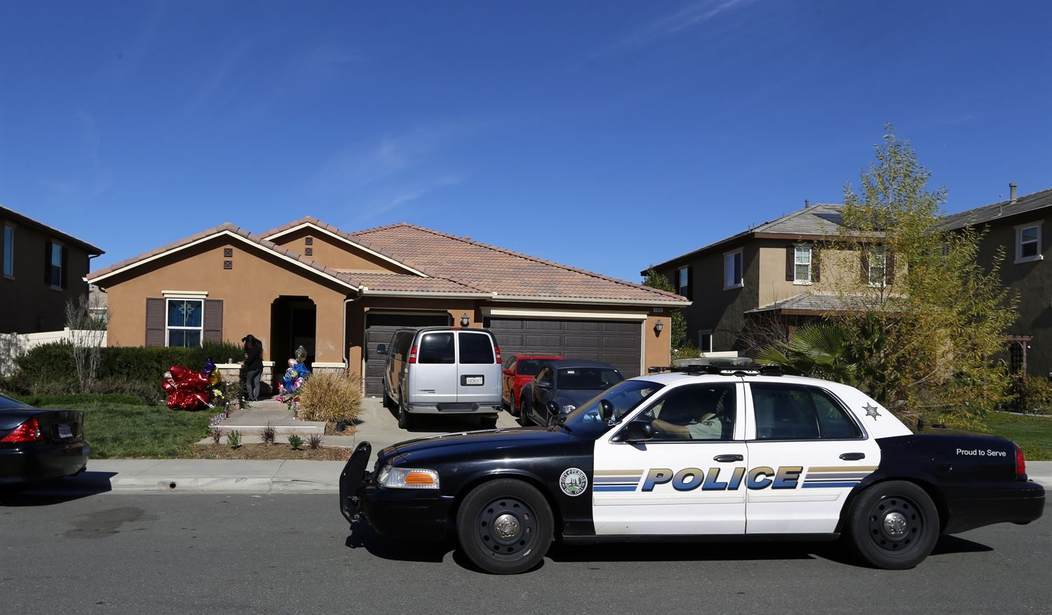In 2015, Rhode Island resident Edward Caniglia was engaged in a heated argument with his wife. The fight grew out of control and at one point Caniglia retrieved one of his guns and presented it to his wife, asking her to shoot him. She fled the house and went to a hotel, calling the police and telling them that she feared her husband might be suicidal. Police rushed to the home without waiting to obtain a warrant, confiscated Caniglia’s firearms and took him to a hospital for a mental wellness check. He filed a lawsuit claiming that the police had no right to enter his home without a warrant and take his guns. One lower court after another sided with the police, but last night the Supreme Court unanimously ruled in Caniglia’s favor and reversed the previous rulings, saying that the man’s Fourth Amendment rights had been violated. As you can imagine, this ruling will have sweeping implications for law enforcement agencies around the nation. (Reuters)
The U.S. Supreme Court on Monday refused to make it easier for police to enter a home without a warrant for reasons of health or public safety, throwing out a lower court’s decision to dismiss a lawsuit brought by a Rhode Island man after officers entered his home and confiscated his guns.
The 9-0 ruling directed the Boston-based 1st U.S. Circuit Court of Appeals to reconsider Edward Caniglia’s lawsuit accusing police of violating his constitutional rights by bringing him to a hospital for a mental health evaluation and taking away his guns without a warrant after a 2015 argument with his wife.
Lower courts had ruled that police in the Rhode Island city of Cranston did not violate the Constitution’s Fourth Amendment ban on unreasonable searches and seizures.
At issue here was an established Supreme Court doctrine acknowledging the ability of the police to engage in “community caretaking” to ensure public safety. That premise grants law enforcement leeway to act quickly if the lives or safety of members of the public are threatened. But in the past, that doctrine had primarily been applied to people who were in their vehicles when the police intervened. This ruling sets limits on that ability, saying that it doesn’t apply to people in their own homes.
For the record, the police refused to return Edward Caniglia’s firearms until he launched the lawsuit, at which point they relented. But this really isn’t a Second Amendment case because the issue being disputed wasn’t the seizure of the weapons, but rather the warrantless entry into the home.
This ruling puts a new spin on the entire debate that’s been going on over so-called “red flag” laws. The assumption is that if a family member or neighbor becomes sufficiently alarmed by someone’s actions that the police can move in to remove their firearms if they believe that the person presents a genuine risk to themself or others. Many, but not all of those cases involve the police obtaining a warrant first, so this ruling wouldn’t apply. But when a phone call comes in saying there’s a critical event taking place right at that moment involving firearms, there won’t always be time to get a warrant, particularly if it’s late at night.
The Fourth Amendment is written pretty clearly in this regard, It assures “the right of the people to be secure in their persons, houses, papers, and effects, against unreasonable searches and seizures.” Previous rulings involving people who are in their vehicles were possible because the wording of the amendment doesn’t completely ensure that right when you’re out on the public streets. But it also only offers protection against unreasonable searches and seizures.
Maybe it’s just me, but a situation where a person is supposedly talking about potentially harming or killing themself with a shotgun sounds like it offers a “reasonable” cause to act quickly. That’s why I’m a bit confused as to how this turned out to be a unanimous decision. I would have assumed that at least the three liberal justices would have sided with the police since it involved taking away someone’s guns.
Clarence Thomas appeared to at least try to address this aspect of the case when he wrote, “What is reasonable for vehicles is different from what is reasonable for homes.” But is it really? I can definitely see that being the case when you’re talking about the police looking for and seizing evidence. But the cops who entered Caniglia’s home were not there solely with the intention of removing his firearms. That was more of a side-effect of the raid. First and foremost they were there to prevent him from attempting to end his own life and ensure that he received medical attention, whether such was truly required or not.
All things considered, I can’t say that I’m really a fan of this ruling. But it’s now part of history and will be cited as precedent in similar cases in the future.








Join the conversation as a VIP Member